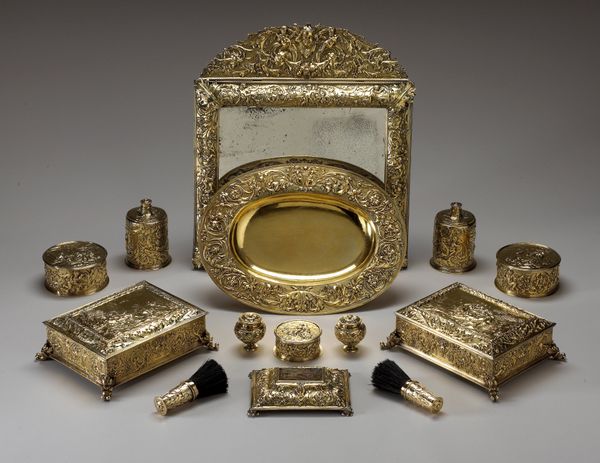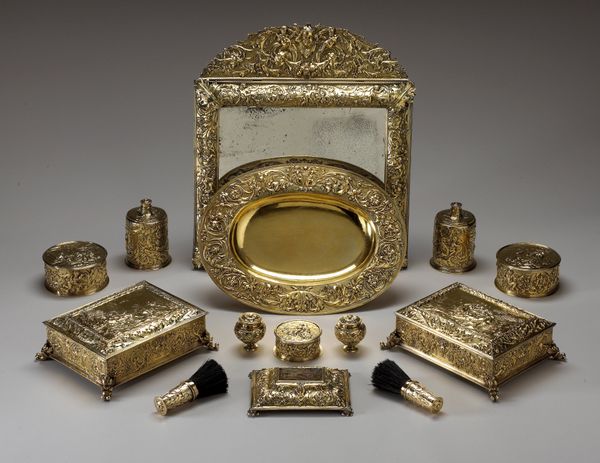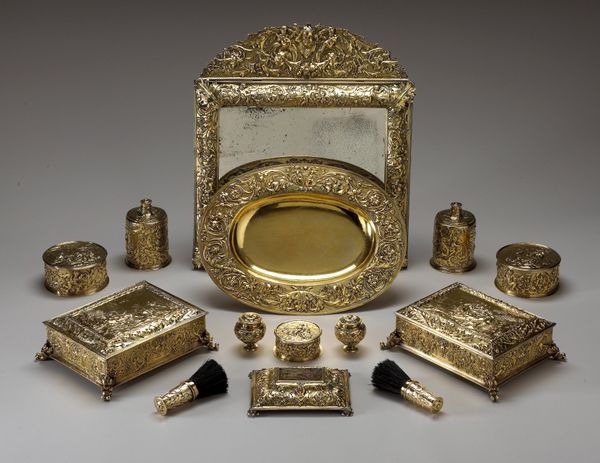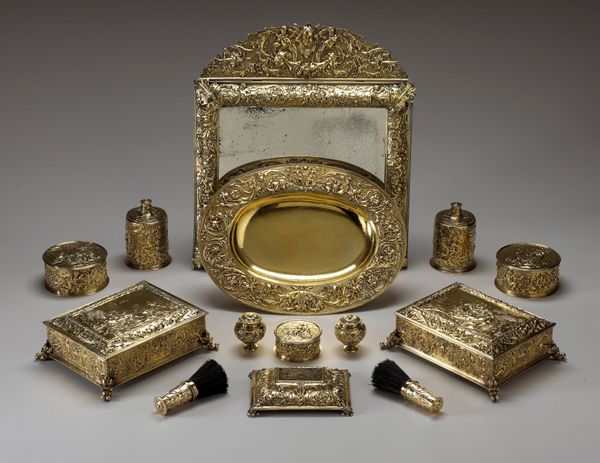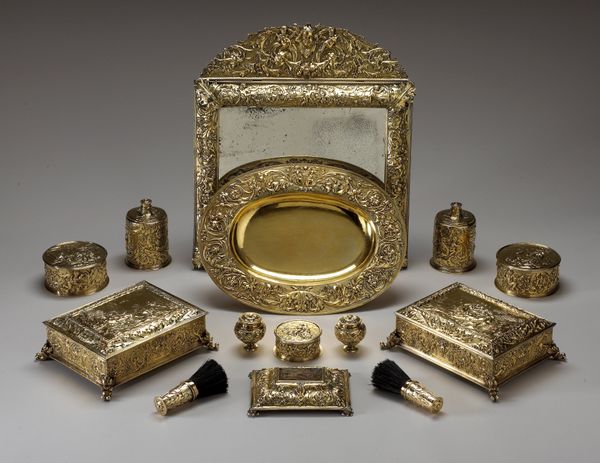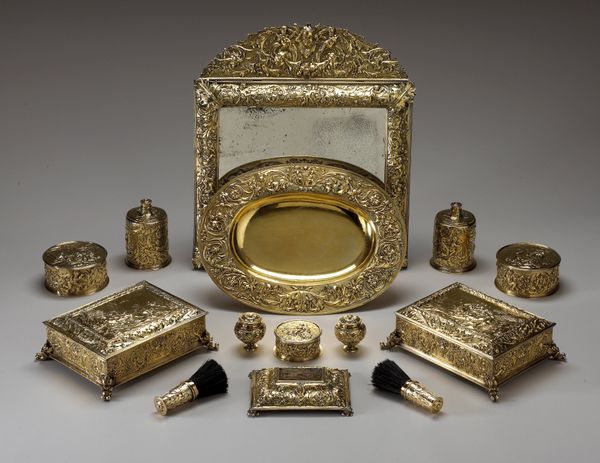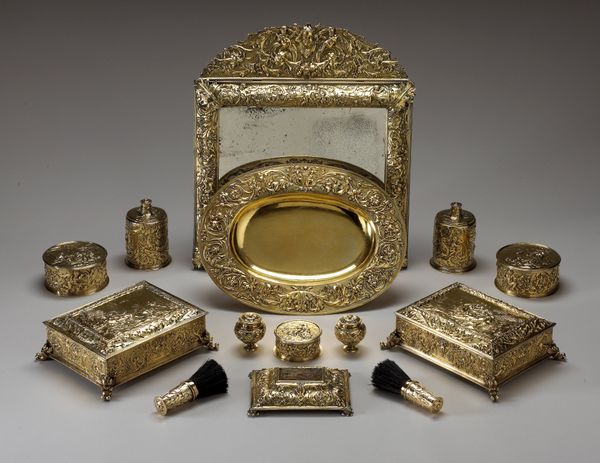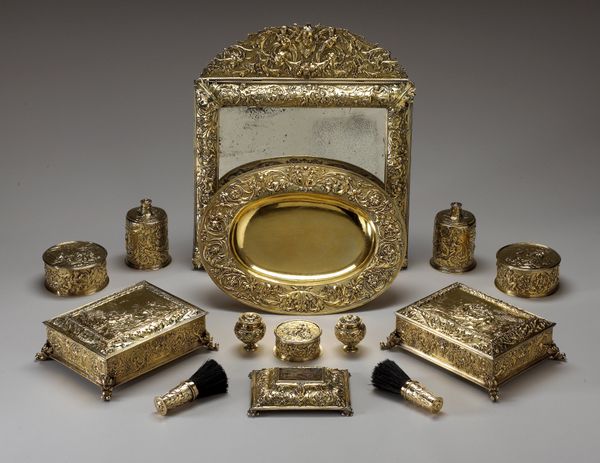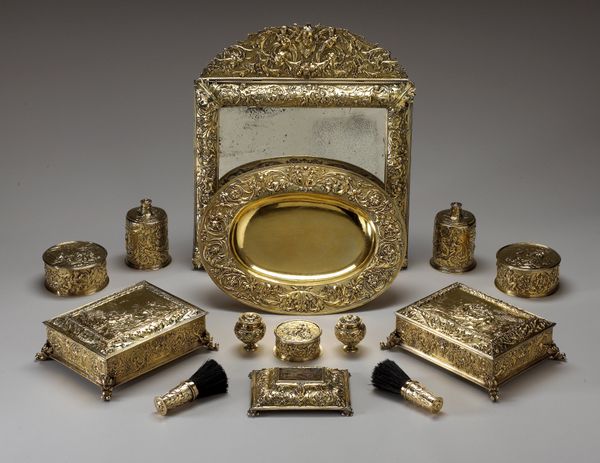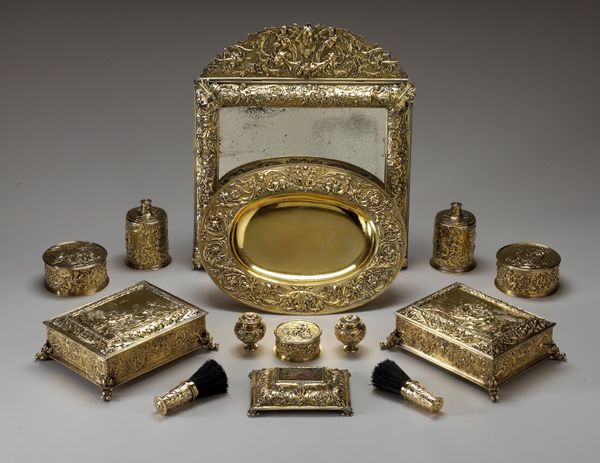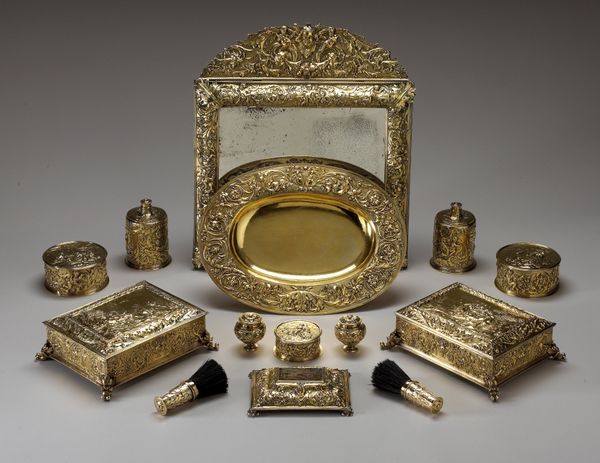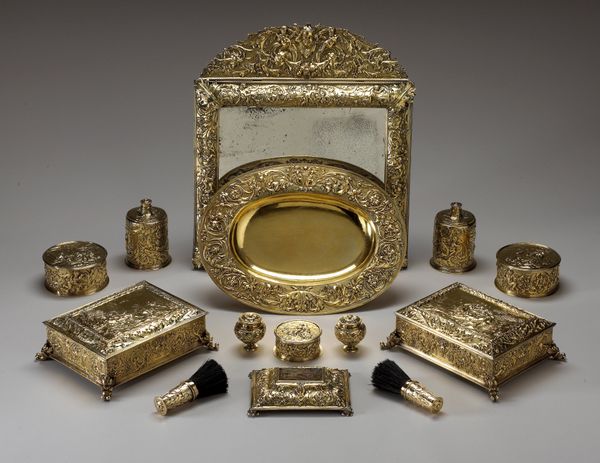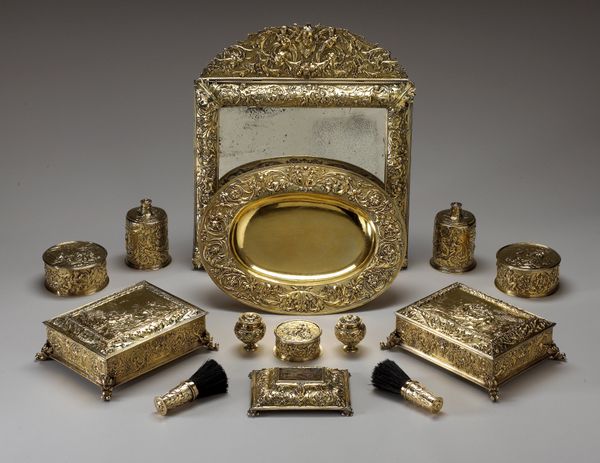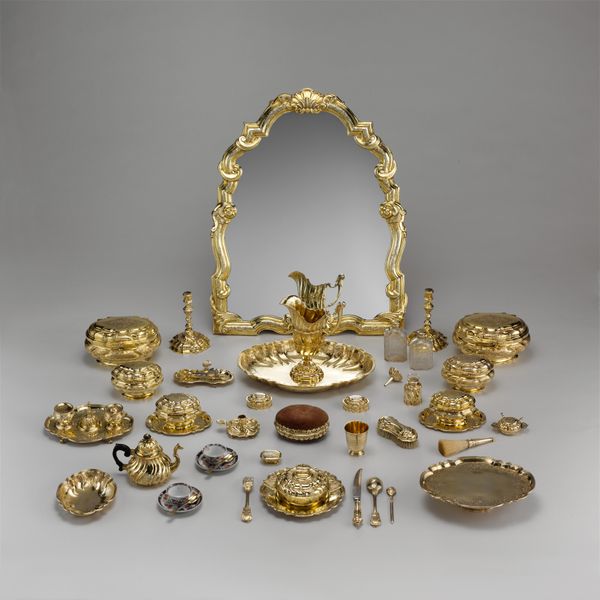
brass, metal
#
portrait
#
brass
#
baroque
#
metal
#
decorative-art
Dimensions: 2 5/8 x 5 1/8 x 5 1/8 in. (6.67 x 13.02 x 13.02 cm)
Copyright: Public Domain
Curator: Here we have an exceptionally ornate brass powder box, crafted in 1683 by William Fowle. You can find this piece here at the Minneapolis Institute of Art. What's your initial reaction to its presence, so laden with detail? Editor: Gosh, what a trove! My immediate thought is it’s an ode to over-the-top consumption. All this gleaming metal! And the intensity of the decorations—it screams luxury, doesn’t it? But tell me, what's your artistic impression? Curator: Absolutely. It has this Baroque energy to it – that flamboyant celebration of earthly delights! I'm swept up in the story told by the details – little figures dancing across the surface. Imagine the light catching all that ornamentation! Each little flower, each face… they would’ve glimmered! This ensemble could’ve served as an invitation to linger, to play with time... a chance for daily reinvention through ritual. Editor: Precisely. But imagine the artisan’s hands. Think of the number of hours dedicated to chasing, engraving, and assembling it all! And for what purpose, ultimately? This speaks volumes about societal excess, especially the intense demands placed on laborers back then. And consider the origins of the brass, the mines… its manufacture reflects entire colonial networks and trade routes dedicated to privilege. Curator: That is all quite sobering to think about. But on another level, it makes me ponder human intention. I think there is undeniable passion. And I'm left imagining its owner… the reflection gazing back from the mirror... who were they? What secrets did those boxes hold? There is just a hint of intrigue. Editor: Intention yes, but so heavily circumscribed. Every touch also involved a host of social and financial relationships… from extracting ore, shipping, forming, sculpting, trading, purchasing... it’s never merely *personal*. These aren’t intimate objects. To the contrary: these served as potent symbols for demonstrating one’s place in the world. Curator: So, this gorgeous testament is also a commentary on labor conditions, materials, class, colonialism. Editor: In a nutshell.
Comments
No comments
Be the first to comment and join the conversation on the ultimate creative platform.
